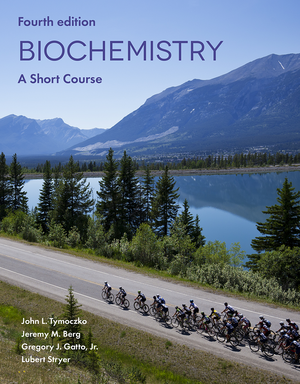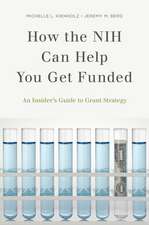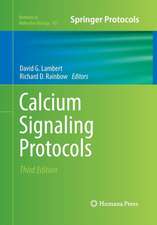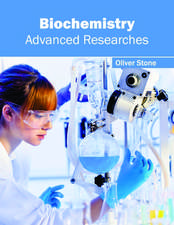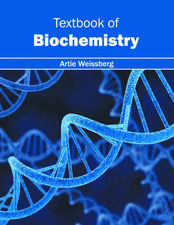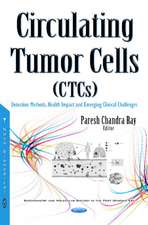Biochemistry: A Short Course: Biochemistry: A Short Course
Autor John L. Tymoczko, Jeremy M. Berg, Lubert Stryer, Gregory Gattoen Limba Engleză Paperback – 15 ian 2019
Biochemistry: A Short Course is now supported in Achieve, Macmillan's new online learning platform. Achieve is the culmination of years of development work put toward creating the most powerful online learning tool for chemistry students. Achieve includes an interactive eBook as well as our renowned assessments and innovative, interactive Metabolic Map. Students will be able to focus their study with adaptive quizzing and more clearly see the relevance of chemistry through case studies. Instructor resources, including tools for active learning, are all housed in this exciting new platform.
Preț: 431.76 lei
Preț vechi: 625.79 lei
-31% Nou
Puncte Express: 648
Preț estimativ în valută:
82.64€ • 89.80$ • 69.47£
82.64€ • 89.80$ • 69.47£
Carte disponibilă
Livrare economică 31 martie-14 aprilie
Livrare express 15-21 martie pentru 142.10 lei
Preluare comenzi: 021 569.72.76
Specificații
ISBN-13: 9781319248086
ISBN-10: 131924808X
Pagini: 996
Ilustrații: Bibliographie
Dimensiuni: 277 x 218 x 37 mm
Greutate: 2.09 kg
Ediția:4th ed. 2019
Editura: Macmillan Learning
Colecția W. H. Freeman
Seria Biochemistry: A Short Course
ISBN-10: 131924808X
Pagini: 996
Ilustrații: Bibliographie
Dimensiuni: 277 x 218 x 37 mm
Greutate: 2.09 kg
Ediția:4th ed. 2019
Editura: Macmillan Learning
Colecția W. H. Freeman
Seria Biochemistry: A Short Course
Notă biografică
John Tymoczko; Jeremy M. Berg; Gregory J. Gatto, Jr.; Lubert Stryer
Cuprins
PART I The Molecular Design of Life
SECTION 1 Biochemistry Helps Us Understand Our World
1. Biochemistry and the Unity of Life
2. Water, Weak Bonds, and the Generation of Order Out of Chaos
SECTION 2 Protein Composition and Structure
3. Amino Acids
4. Protein Three-Dimensional Structure
5. Techniques in Protein Biochemistry
SECTION 3 Basic Concepts and Kinetics of Enzymes
6. Basic Concepts of Enzyme Action
7. Kinetics and Regulation
8. Mechanisms and Inhibitors
9. Hemoglobin, an Allosteric Protein
SECTION 4 Carbohydrates and Lipids
10. Carbohydrates
11. Lipids
SECTION 5 Cell Membranes, Channels, Pumps, and Receptors
12. Membrane Structure and Function
13. Signal-Transduction Pathways
PART II Transducing and Storing Energy
SECTION 6 Basic Concepts and Design of Metabolism
14. Digestion: Turning a Meal into Cellular Biochemicals
15. Metabolism: Basic Concepts and Design
SECTION 7 Glycolysis and Gluconeogenesis
16. Glycolysis
17. Gluconeogenesis
SECTION 8 The Citric Acid Cycle
18. Preparation for the Cycle
19. Harvesting Electrons from the Cycle
SECTION 9 Oxidative Phosphorylation
20. The Electron-Transport Chain
21. The Proton-Motive Force
SECTION 10 The Light Reactions of Photosynthesis and the Calvin Cycle
22. The Light Reactions
23. The Calvin Cycle
SECTION 11 Glycogen Metabolism and the Pentose Phosphate Pathway
24. Glycogen Degradation
25. Glycogen Synthesis
26.The Pentose Phosphate Pathway
SECTION 12 Fatty Acid and Lipid Metabolism
27. Fatty Acid Degradation
28. Fatty Acid Synthesis
29. Lipid Synthesis: Storage Lipids, Phospholipids, and Cholesterol
SECTION 13 The Metabolism of Nitrogen-Containing Molecules
30. Amino Acid Degradation and the Urea Cycle
31. Amino Acid Synthesis
32. Nucleotide Metabolism
PART III Synthesizing the Molecules of Life
SECTION 14 Nucleic Acid Structure and DNA Replication
33. The Structure of Informational Macromolecules: DNA and RNA
34. DNA Replication
35. DNA Repair and Recombination
SECTION 15 RNA Synthesis, Processing, and Regulation
36. RNA Synthesis and Regulation in Bacteria
37. Gene Expression in Eukaryotes
38. RNA Processing in Eukaryotes
SECTION 16 Protein Synthesis and Recombinant DNA Techniques
39. The Genetic Code
40. The Mechanism of Protein Synthesis
41. Recombinant DNA Techniques
SECTION 1 Biochemistry Helps Us Understand Our World
1. Biochemistry and the Unity of Life
2. Water, Weak Bonds, and the Generation of Order Out of Chaos
SECTION 2 Protein Composition and Structure
3. Amino Acids
4. Protein Three-Dimensional Structure
5. Techniques in Protein Biochemistry
SECTION 3 Basic Concepts and Kinetics of Enzymes
6. Basic Concepts of Enzyme Action
7. Kinetics and Regulation
8. Mechanisms and Inhibitors
9. Hemoglobin, an Allosteric Protein
SECTION 4 Carbohydrates and Lipids
10. Carbohydrates
11. Lipids
SECTION 5 Cell Membranes, Channels, Pumps, and Receptors
12. Membrane Structure and Function
13. Signal-Transduction Pathways
PART II Transducing and Storing Energy
SECTION 6 Basic Concepts and Design of Metabolism
14. Digestion: Turning a Meal into Cellular Biochemicals
15. Metabolism: Basic Concepts and Design
SECTION 7 Glycolysis and Gluconeogenesis
16. Glycolysis
17. Gluconeogenesis
SECTION 8 The Citric Acid Cycle
18. Preparation for the Cycle
19. Harvesting Electrons from the Cycle
SECTION 9 Oxidative Phosphorylation
20. The Electron-Transport Chain
21. The Proton-Motive Force
SECTION 10 The Light Reactions of Photosynthesis and the Calvin Cycle
22. The Light Reactions
23. The Calvin Cycle
SECTION 11 Glycogen Metabolism and the Pentose Phosphate Pathway
24. Glycogen Degradation
25. Glycogen Synthesis
26.The Pentose Phosphate Pathway
SECTION 12 Fatty Acid and Lipid Metabolism
27. Fatty Acid Degradation
28. Fatty Acid Synthesis
29. Lipid Synthesis: Storage Lipids, Phospholipids, and Cholesterol
SECTION 13 The Metabolism of Nitrogen-Containing Molecules
30. Amino Acid Degradation and the Urea Cycle
31. Amino Acid Synthesis
32. Nucleotide Metabolism
PART III Synthesizing the Molecules of Life
SECTION 14 Nucleic Acid Structure and DNA Replication
33. The Structure of Informational Macromolecules: DNA and RNA
34. DNA Replication
35. DNA Repair and Recombination
SECTION 15 RNA Synthesis, Processing, and Regulation
36. RNA Synthesis and Regulation in Bacteria
37. Gene Expression in Eukaryotes
38. RNA Processing in Eukaryotes
SECTION 16 Protein Synthesis and Recombinant DNA Techniques
39. The Genetic Code
40. The Mechanism of Protein Synthesis
41. Recombinant DNA Techniques
